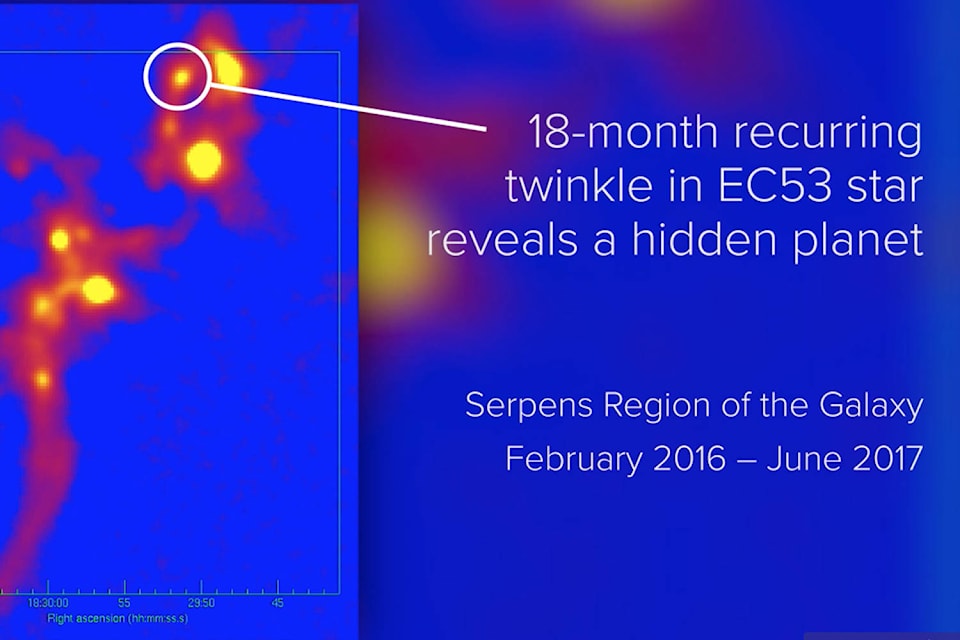An astronomer from the University of Victoria has helped discover an emerging star with a special twinkle.
Doug Johnstone, Research Officer at the National Research Council of Canada, who teaches in Department of Physics and Astronomy, co-led an international team of researchers, who discovered a rare stellar object: a not-yet-full formed star likely orbited by a likely, hidden planet.
Johnstone, who led the team with Greg Herczeg, Professor at Peking University, discovered the phenomenon in the Serpens constellation, using a telescope capable of detecting non-visible, high frequency waves. In fact, Johnstone received a helping hand from his Ph.D. student Steve Mairs.
The star known is EC53 is currently emerging from an inter-stellar nursery, a molecular cloud in inter-stellar space, where gas and dust are contracting to create new stars.
Johnstone said the observed star is a proto-star, not yet generating energy through the process of nuclear fusion that turns hydrogen into helium.
When stars like the observed star of EC53 form, spheres of gas and dust surround them. Some of this material will flatten into a disk from which planets will form. While the surrounding cloud prohibits direct optical observation, researchers can study the study by studying the cloud, which is relatively warm compared to the area outside of it.
Using the James Clerk Maxwell Telescope (JCMT) Transient Survey located in Hawaii, Johnstone, Herczeg, and their supporting team, observed the luminosity of the star dipping at a regular interval of 18 months.
“This variation in the brightness or twinkle of the star EC53 suggests that something large is disrupting the gravitational pull of the forming star,” said Johnstone. “The fact that it recurs every 18 months suggests that this influence is orbiting around the star – it’s quite likely a hidden, forming planet.”
Perhaps the best analogy comes from the world of pastries. The emerging star sits in the middle of a doughnut hole. The accompanying planet circles around the sun at the inner edge of the doughnut ring, and as it circles around the sun, its weight disrupts the rate of material that the sun is “gulping” off the doughnut, changing its brightness along the way.
Johnstone said scientists know nothing about the likely planet that rotates around EC53, nor will they be able to predict its fate.
While scientists have observed variations in the brightness of EC53 before, the use of JCMT allowed the scientists to confirm that some other object — in this case, a likely planet — has impacted the emerging star.
Johnstone, who studies stellar nurseries, said he wasn’t quite sure what to expect his team decided to study EC53. “It was a shot in the dark,” he said.
Johnstone and the other scientists were essentially looking for minute changes, changes that would be very difficult to detect. “It’s like looking for a change a kid over a couple of days,” he said.
But the JCMT delivered on its promise, said Johnstone. To use an analogy, previous technology allowed scientists to take pictures of phenomenon. But the use of sub-millimetre radio astronomy technology is like taking a video, said Johnstone.
This research will help scientists get a better of how star systems emerge. Specifically, it will help them determine in which order stars and planets emerge, and the conditions under which planets survive, as their solar-systems take shape.
Ultimately, this discovery will help humans learn about their own solar-system.
“It gives us a better sense of how we got here,” said Johnstone.
